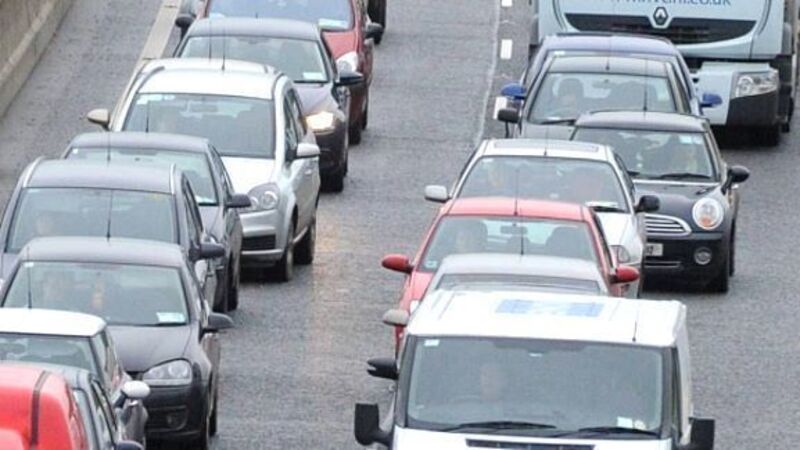‘Pollution a legacy of car sales boom’

Nitrogen oxide emissions can only be reduced if car travel falls off and if vehicles with improved emission output are used.
During the boom, there were more — and bigger — cars on the road and, as fuel usage skyrocketed, so did nitrogen oxide levels.
Such air pollution leads to acid rain, smog, and damage to the ozone layer.
High nitrogen oxide emissions also pose a threat to human health, as they are a respiratory irritant, particularly for people with asthma, according to Eimear Cotter of the Environmental Protection Agency.
“The key to decreasing nitrogen oxide emissions lies in reducing travel and incentivising the purchase of cleaner vehicles with improved emission controls,” said Dr Cotter. “Changing behavioural patterns in these two areas will reduce emissions so contributing to a cleaner, healthier environment and a better quality of life.”
Other pollutants, such as sulphur dioxide, volatile organic compounds (VOCs), and ammonia were well within EU emission limits.
The main sources of these emissions are power generation, emissions from the residential and commercial sectors, solvent use and transport, and agriculture.
According to the EPA, reductions in these three pollutants have been achieved through licensing and enforcement by the EPA, stricter regulation of VOC emissions from vehicles, and declining animal numbers in agriculture.
“The switch to low sulphur fuels and low solvent products such as paints is welcome, and has kept Ireland below EU emission ceilings for sulphur dioxide and volatile organic compounds,” said Dr Cotter.
“Ammonia emissions have stayed reasonably constant since 1990. However, ambitious targets under Food Harvest 2020 could put pressure on ammonia emissions into the future.”
Emissions of nitrogen oxides fell 47% between 1990 and 2011 but the decreases are not enough to meet EU emissions targets.
Sulphur dioxide pollution has fallen steadily since 1990 and at sufficient levels to meet EU targets. According to the EPA, this has been achieved by switching fuel in energy sectors from high to low sulphur fuels such as natural gas, the fitting of SO2 abatement technology in power generation plant, the ban on bituminous coal in urban centres, and a voluntary agreement to reduce the sulphur content of solid fuels, which was given a statutory footing in 2011.
The reporting of fly-tipping, backyard burning, and water pollution has been made easier by the launch of a new app which will allow the public to send a photograph directly to a local authority to hunt down offenders.
When a photo is taken using the Environmental Protection Agency ‘See it? Say it!’ app, GPS location co-ordinates are attached to the picture and senders can also supply a short text summary of what was observed. The picture and details will automatically be sent to the relevant local authority.
EPA programme manager David Flynn said the app will “make it easy for people who see something to say something”.
He said he hopes people “will download and use the app’s simple reporting methods to protect their local areas”.
“The app is currently available for iPhone customers and the EPA hopes to extend this to Android phones,” he said.
However, Irish Business Against Litter chairman Tom Cavanagh claimed the app was of little use if local authorities did not follow complaints up, or if they did not have enough staff available.
Joe Crockett of the County and City Managers Association said the app “will greatly assist the environment enforcement officers to rapidly respond to reported environmental complaints”.
*The 24-hour complaints phone line — 1850 365 121 — will remain in place.
*The app can be downloaded from the iTunes App Store.
— Claire O’Sullivan
New climate change laws have been branded as “toothless” after the Coalition shied away from setting specific targets for the reduction of greenhouse gas emissions.
The draft bill commits Ireland to the EU’s emission reduction targets for 2020. But it does not commit Ireland to its own reductions by 2030 and 2050 — as outlined in a previous draft bill which was never passed.
Instead, the latest bill says the State will “pursue and achieve transition to a low carbon, climate resilient and environmentally sustainable economy in the period up to and including the year 2050”.
But environmental campaign group, Friends of the Earth, said the bill will not deliver. “Vested interests will say ‘not us, not here, not yet’ and Government will ditch policies to placate those who protest loudest, resulting in dither and delay,” said its policy manager, Molly Walsh.
Independent TD, Catherine Murphy said: “Targets are absolutely vital; they force a change in culture.”












